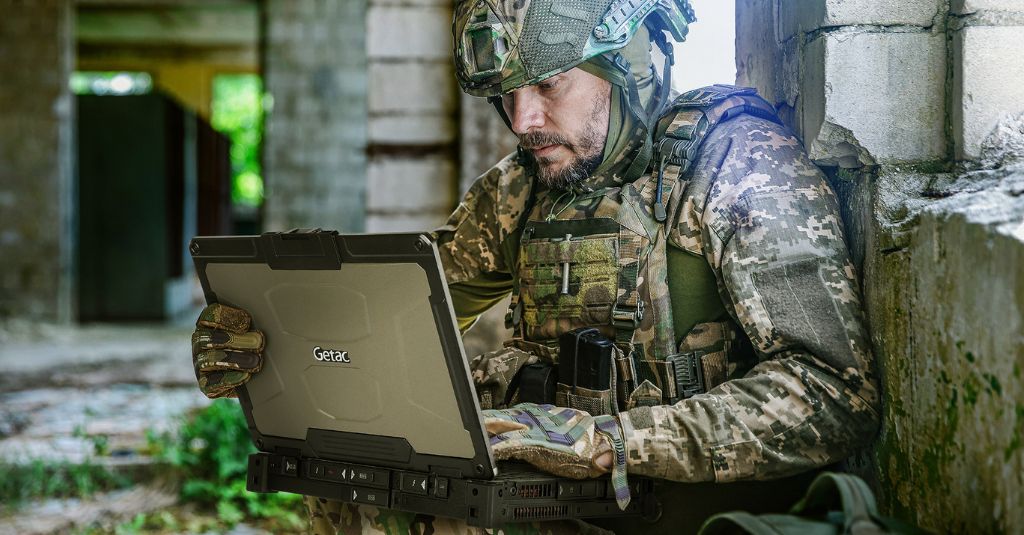Nicholas Newman is an Oxford based journalist, blogger, editor, and consultant that covers a range of topics in the global energy, technology, and transport sectors as they apply to extraction, markets, regulation, fiscal and policy sectors.

Getac Select
A combination of rugged computing devices, software, accessories and professional services in a purposeful range of specifically tailored solutions.
Getac Video Solutions
Video capture, evidence management, rugged hardware and robust software solutions for law enforcement and other industries.
Defense
Mission-critical COTS computing that delivers high powered processing and reliability in operational environments
Public Safety
Law Enforcement, EMS, Fire & Rescue applications
Utilities
Smart Meter Reading and Installation, On-site Safety, Utility Asset Management, Workforce Management for Utilities, Mobile GIS, Surveying and Mapping
Transportation & Logistics
Railroad Management, Airport Management, Port Management, Long-haul Delivery Fleet Management, Warehouse Materials Handling
Industrial Manufacturing
Industrial Programming and Robotic Control, Facility management, Compliance and Inspections, Workforce Management, Inventory and Warehouse Management, Factory Automation and Plant Monitoring, EAM and CMMS Solutions.
Automotive
Optimized Rugged Mobile Solutions to drive a smarter approach throughout the automotive value-chain.
Natural Resources
Mining, Forestry and Construction applications
Oil & Gas
Remote Support, Asset Management, Field Data Analysis, Workplace Safety
Thirty years ago, communications between onshore bases with remote offshore oil rigs and exploration vessels were typically constrained by narrow bandwidth, limited to two-way radios, and confined to daily operational reports. Crews were extremely isolated by distance and poor communications. However, good operations required that these remote offshore installations be staffed by on-site management teams capable of making quick decisions.
Since then, thanks to technological innovations, we have real-time communication systems that support Wi-Fi connectivity and mobile phones while transmitting vast amounts of offshore and onshore data. This revolution is enabling remote control and management of offshore rigs and subsea installations, reducing the size and cost of remote crews.
Today, offshore telecom services provide continuous data, voice, and visual services, significantly boosting operational efficiency, ensuring safety, and e-health as well as the training of talent.
Data exchange is vital for sustained operations. Every hour, vast amounts of seismic and operational data are transmitted by offshore drilling platforms. A drilling recorder provides information on rock formations, pump and valve control, flow measurements, pressure and temperature, leak detection, and corrosion, all of which are sent onshore for analysis to aid operations and management with decision-making.
Spanning offshore and onshore worksites, today’s advanced communication systems underpin the remote monitoring and management of internet of things (IoT) equipment, thereby boosting operational efficiency. Moreover, secure communications and access to enhanced information must support oil platform rig workers when they need to make quick decisions on accidents, oil leaks, or even hurricanes.
For the first time, reliable telecommunications are vital in providing e-health and e-training to offshore staff. Distance-learning courses are increasing so that staff can learn best practices.
As offshore workers spend weeks at sea and are on duty for half of their time, advances in telecom bandwidth capacity and satellite and mobile phones provide connections to friends and family, helping morale.
Modern offshore oil and gas facilities use satellite, microwave, fiber optic, and even cellular services, which can work independently or together. The choice of technology depends on considerations such as data volume and transmission distance as well as cost.
For long-distance offshore communications and transmission of data, satellite is the most popular. A typical system includes a VSAT (Very Small Aperture Terminal) at the offshore site, a broadband satellite connection in orbit, and a teleport antenna onshore. Because satellite-based communications are available anywhere in the world, they are ideal for ships or remote rigs. The main disadvantages are time delays in transmission and bandwidth congestion. However, improved satellites and algorithms are boosting bandwidth.
For smaller areas, such as an offshore oil or gas field, options include microwave, cable, and cellular for voice, video, and computer data, transmitted point to point or through a network. Usually, microwave communications are best for a cluster of nearby sites, such as those in the Gulf of Mexico or the North Sea.
For point-to-point (for example, data transmission between sub-sea trees, manifolds, and sub-sea cables) fiber optic communications are ideal for clustered or offshore facilities that are in high-traffic areas, such as the South China Sea or the Persian Gulf.
For close-to-shore locations, cellular services support personal and corporate communications. For example, cellular towers in the coastal waters of the Gulf of Mexico facilitate communications between rigs and platforms with onshore locations, allowing rig workers to keep in touch with their dear ones.
To ensure reliable connectivity and communications 24/7 even under extreme temperatures and wind, line-of-sight issues, or a hacking attack, oil companies are adopting a range of communication solutions integrated into one package.
Oil companies typically need short and long-distance communications such as satellites to transmit data over long distances to a base together with fiber to share network data among subsea wells and rigs in an offshore field. To satisfy these demands, integrated telecom solutions provide on-site flexibility as well as real-time transfer of data from subsea wells to onshore bases.
Recent advances in real-time data communications provide a wealth of information to supervisory staff and have shifted decision-making from rigs to onshore bases. Efficiency gains have also reduced rig crew numbers. In the not-too-distant future, more offshore rigs and fields will likely be supervised from an onshore base. State-of-the-art technology interprets ‘big data,’ for onshore control bases. These invaluable advances are encouraging the adoption of artificial intelligence, blockchain, cloud computing, and IoT in the oil and gas industry.
Nicholas Newman is an Oxford based journalist, blogger, editor, and consultant that covers a range of topics in the global energy, technology, and transport sectors as they apply to extraction, markets, regulation, fiscal and policy sectors.


